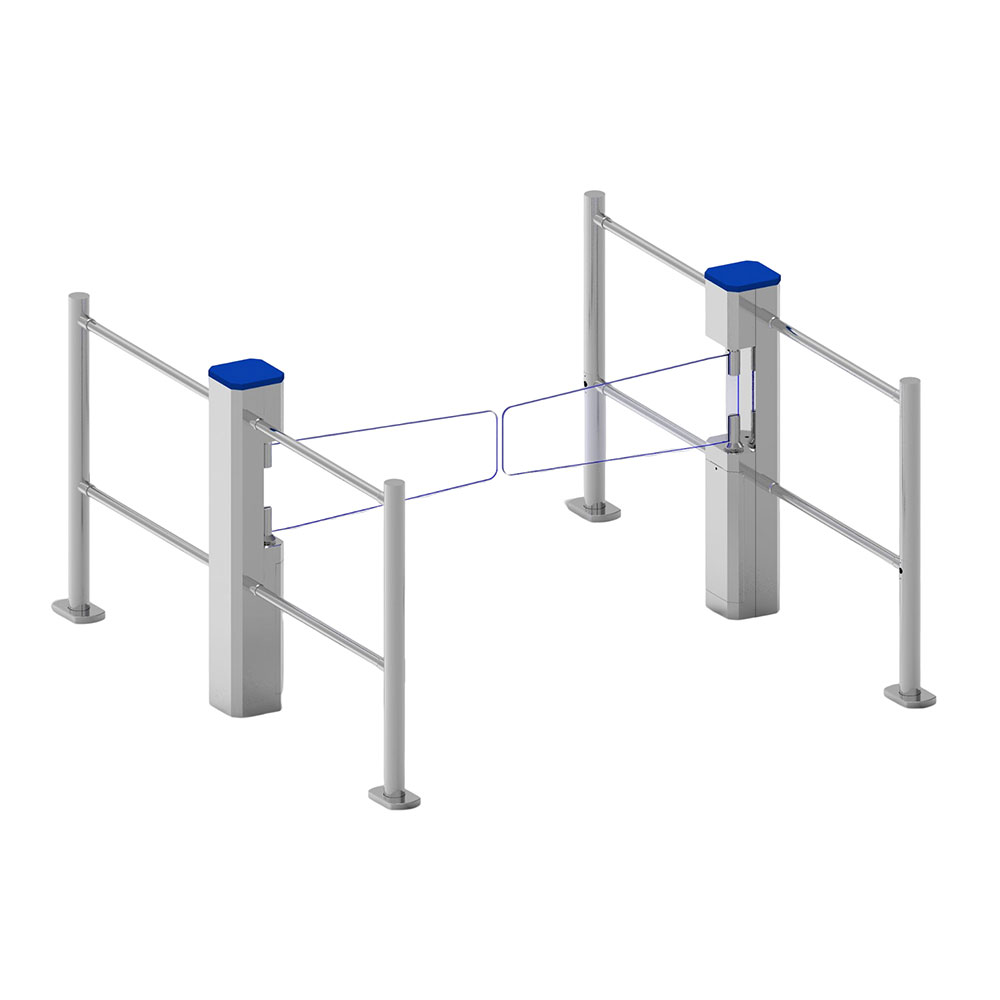- English
- Español
- Português
- русский
- Français
- 日本語
- Deutsch
- tiếng Việt
- Italiano
- Nederlands
- ภาษาไทย
- Polski
- 한국어
- Svenska
- magyar
- Malay
- বাংলা ভাষার
- Dansk
- Suomi
- हिन्दी
- Pilipino
- Türkçe
- Gaeilge
- العربية
- Indonesia
- Norsk
- تمل
- český
- ελληνικά
- український
- Javanese
- فارسی
- தமிழ்
- తెలుగు
- नेपाली
- Burmese
- български
- ລາວ
- Latine
- Қазақша
- Euskal
- Azərbaycan
- Slovenský jazyk
- Македонски
- Lietuvos
- Eesti Keel
- Română
- Slovenski
- मराठी
- Srpski језик
What is the difference between a turnstile and a flap barrier?
2023-12-20
Swing Barrier Turnstiles and flap barriers are both types of access control systems commonly used to regulate the flow of people in various settings. While they share the common purpose of controlling pedestrian access.

Swing Barrier Turnstiles are mechanical gates consisting of horizontal arms or bars that rotate or swing horizontally in one direction.
They often have a tripod design or multiple horizontal bars arranged in a circular or linear pattern.
Users must push or rotate the turnstile arms to pass through the gate.
Turnstiles typically allow one person to pass at a time and prevent multiple individuals from passing simultaneously without proper authorization.
Swing Barrier Turnstiles are effective for basic crowd control and preventing unauthorized entry, but they may not provide as much physical obstruction as some other access control systems.
Commonly used in stadiums, amusement parks, subway stations, and other public places where controlled entry and exit are required.
Flap barriers are vertical barriers with swinging or retractable panels that create a physical barrier when closed.
They have two or more panels that swing open to allow access when a valid entry is detected.
Flap barriers are typically motorized and can open and close automatically in response to access control signals.
They may have sensors to detect the presence of users and respond accordingly.
Flap barriers provide a higher level of security compared to turnstiles due to their physical barrier design. The swinging panels create a more substantial obstacle, making it difficult for unauthorized individuals to pass through.
Often used in environments that require a higher level of security, such as office buildings, corporate facilities, and government institutions.
Turnstiles have horizontal rotating or swinging arms but lack a full physical barrier.
Flap barriers have vertical swinging or retractable panels that create a more substantial physical barrier.



